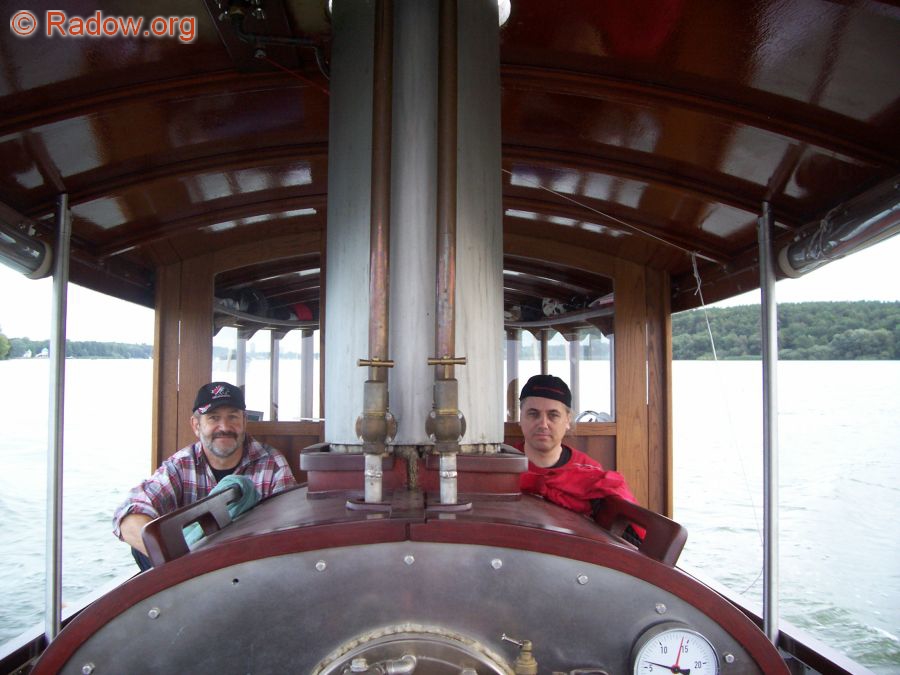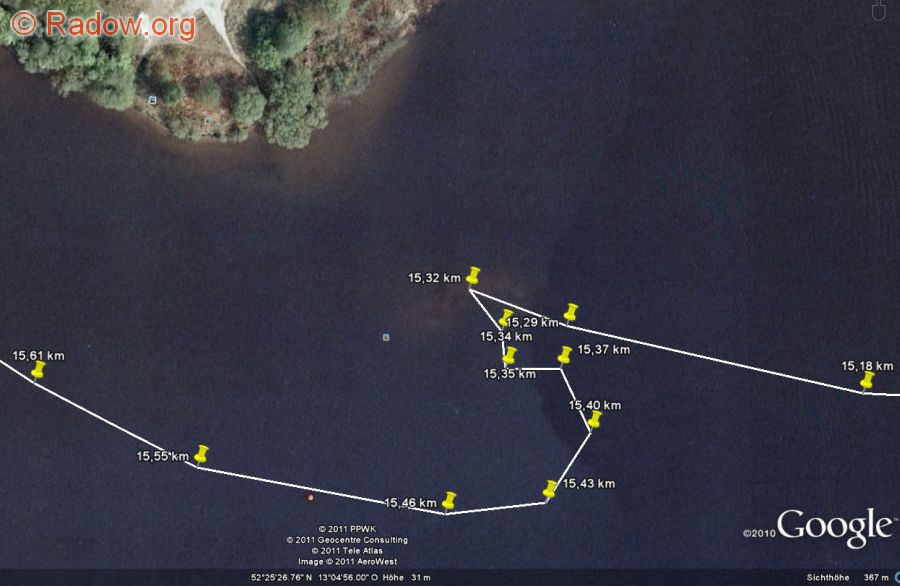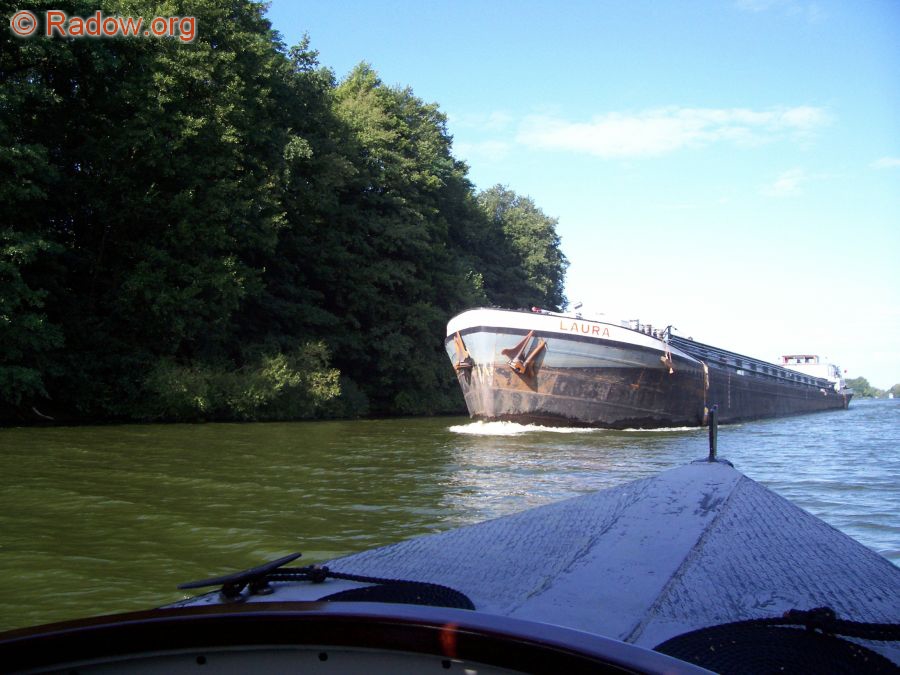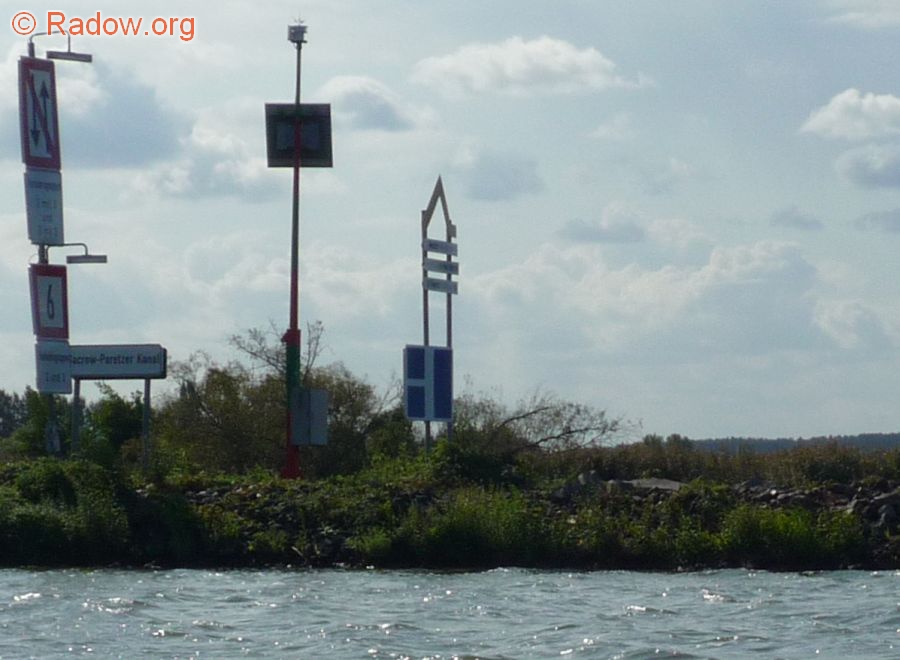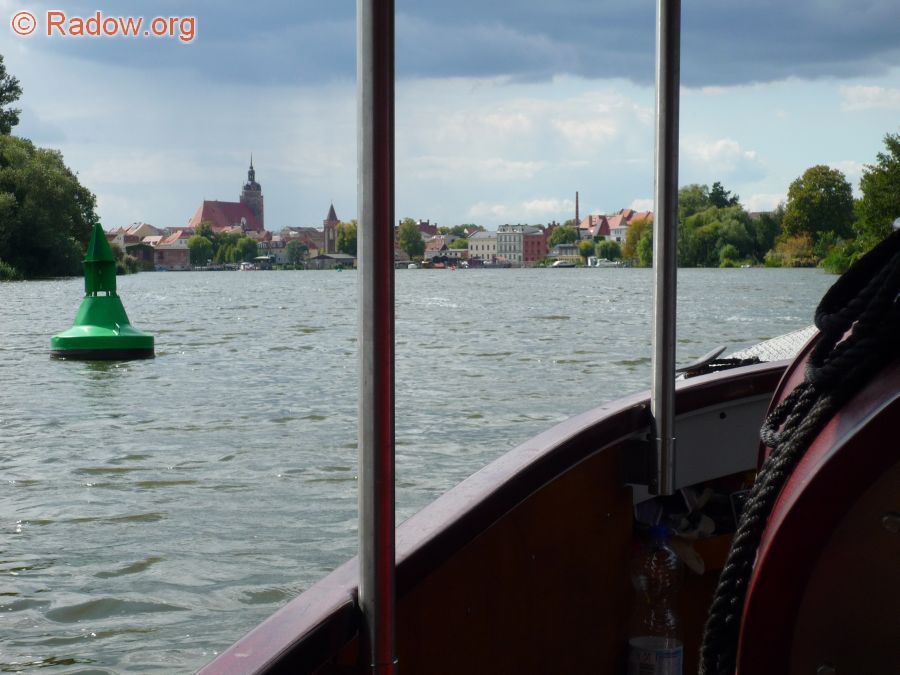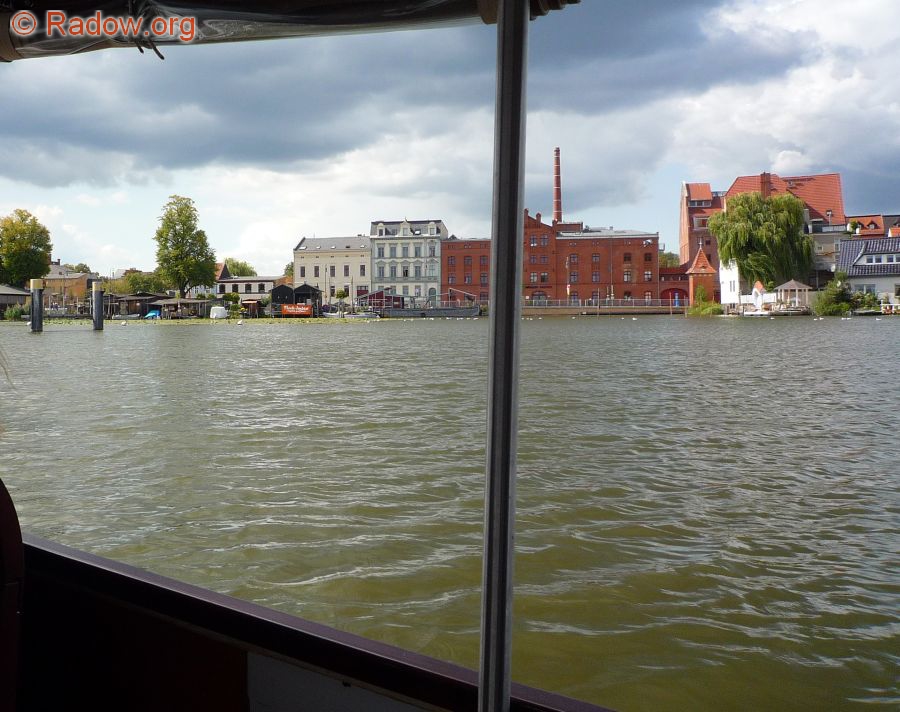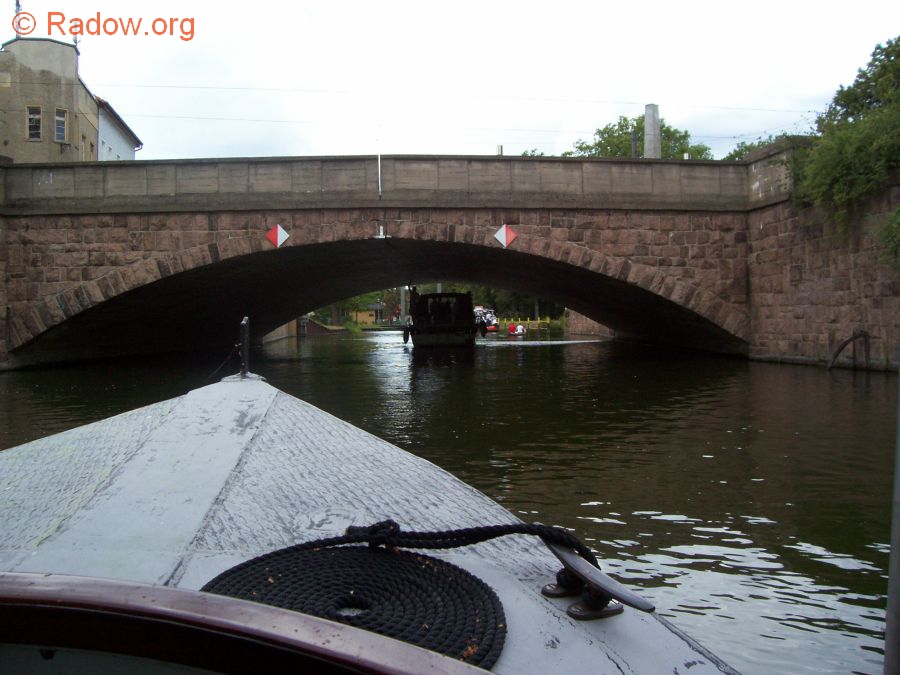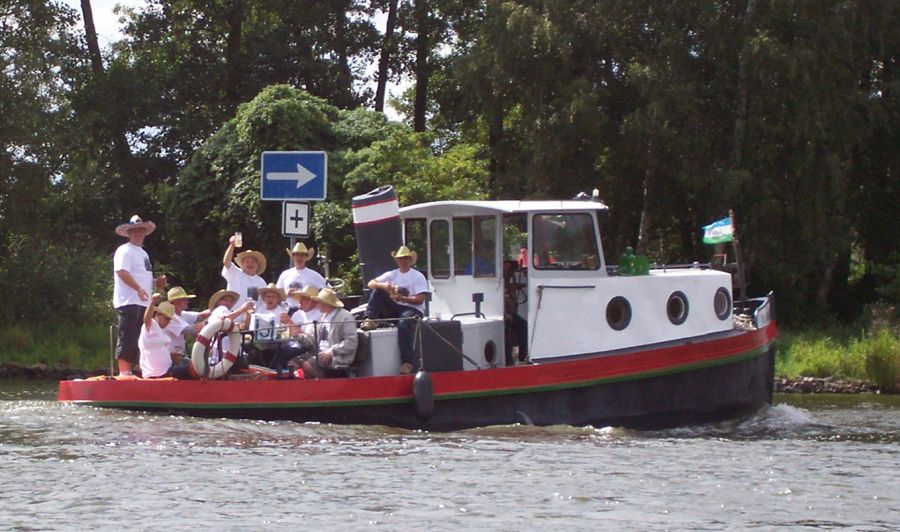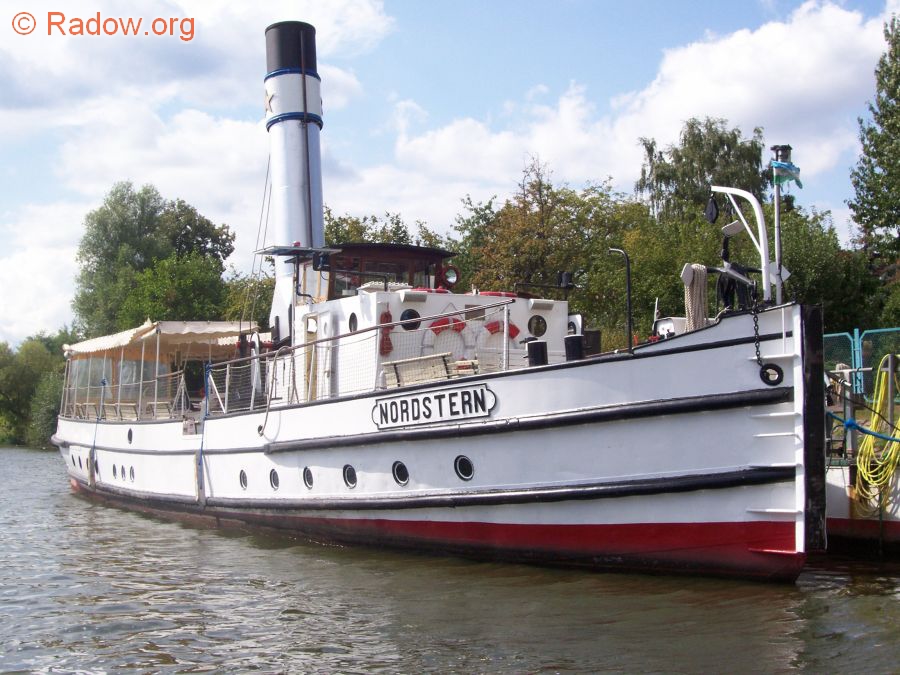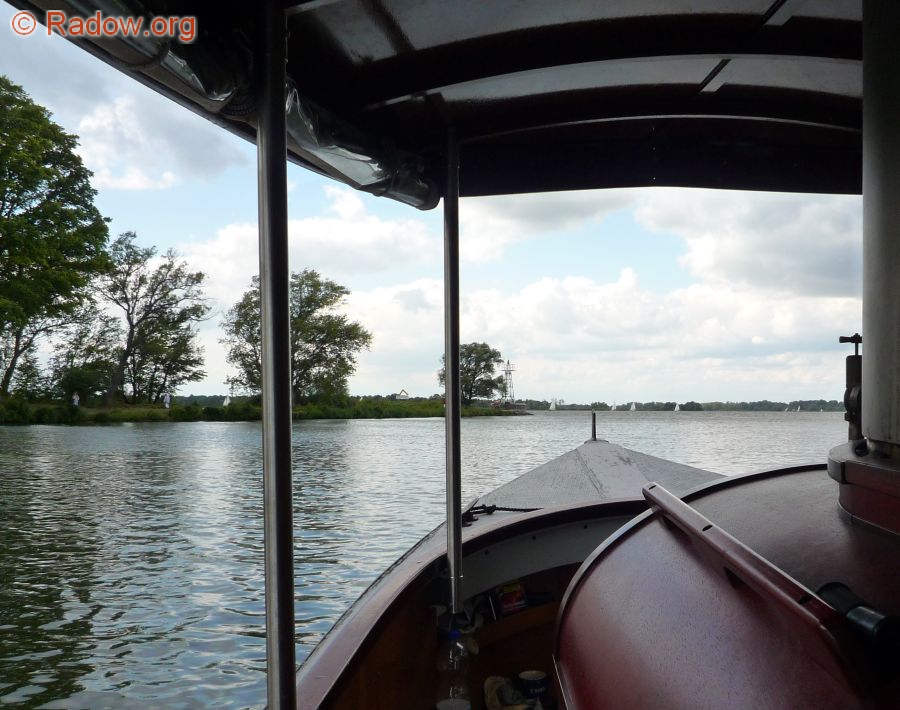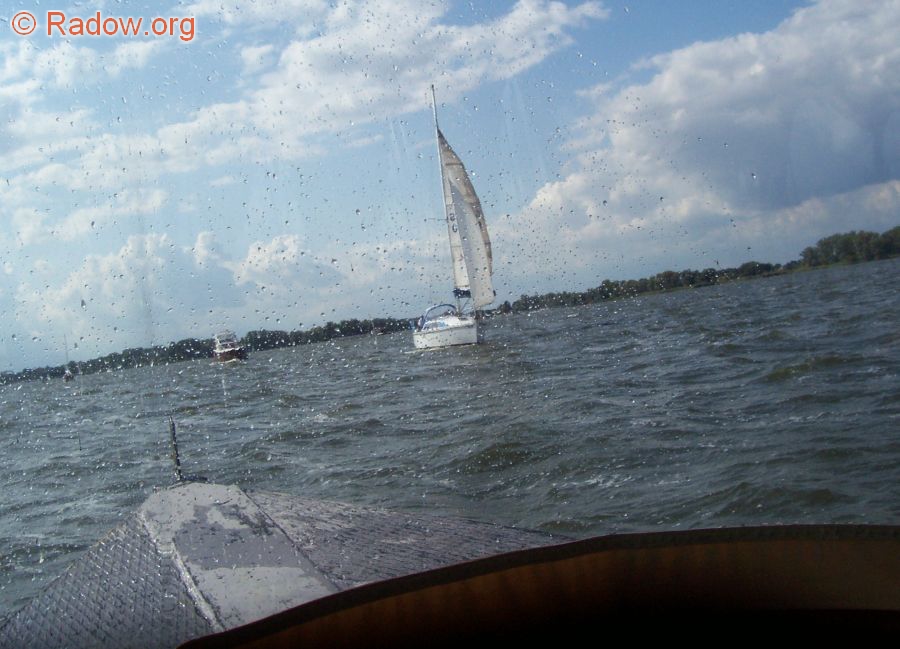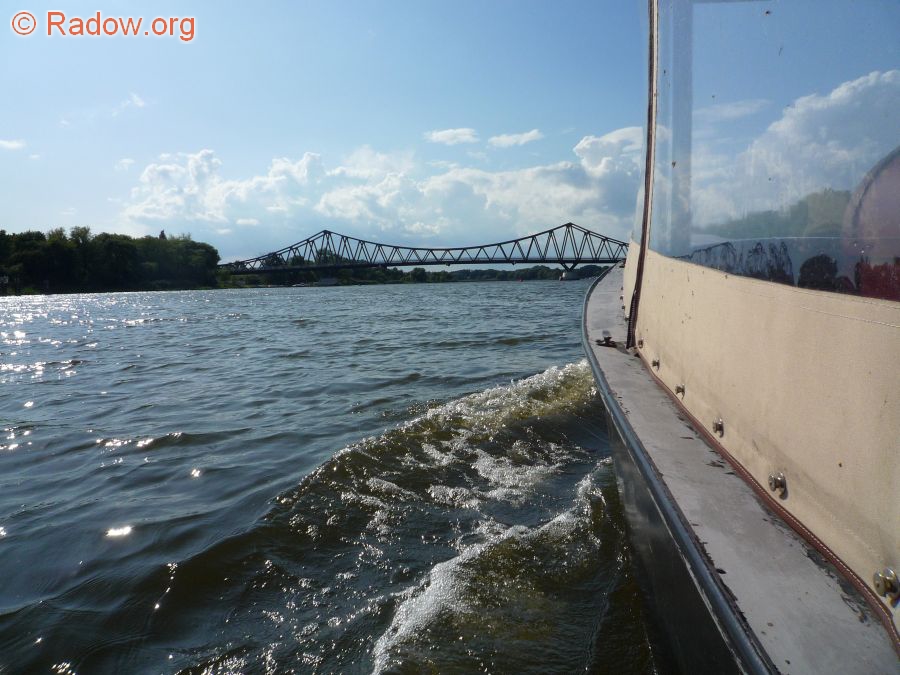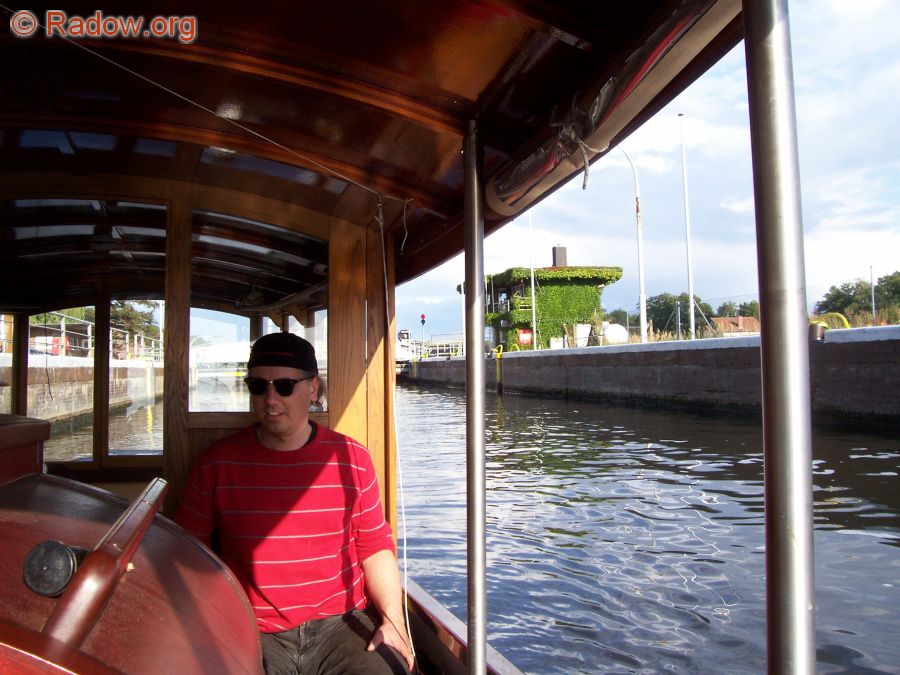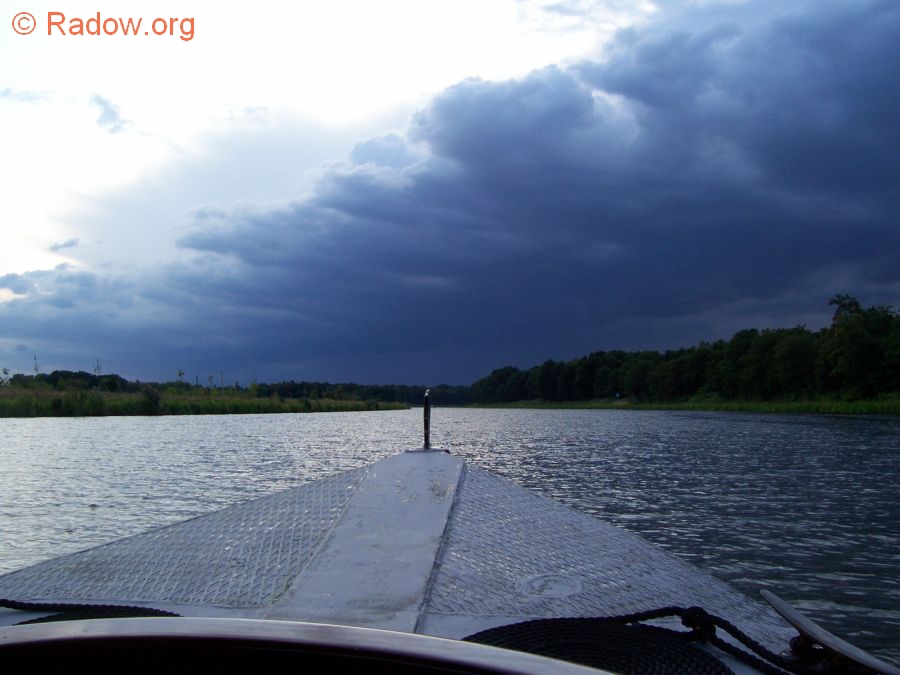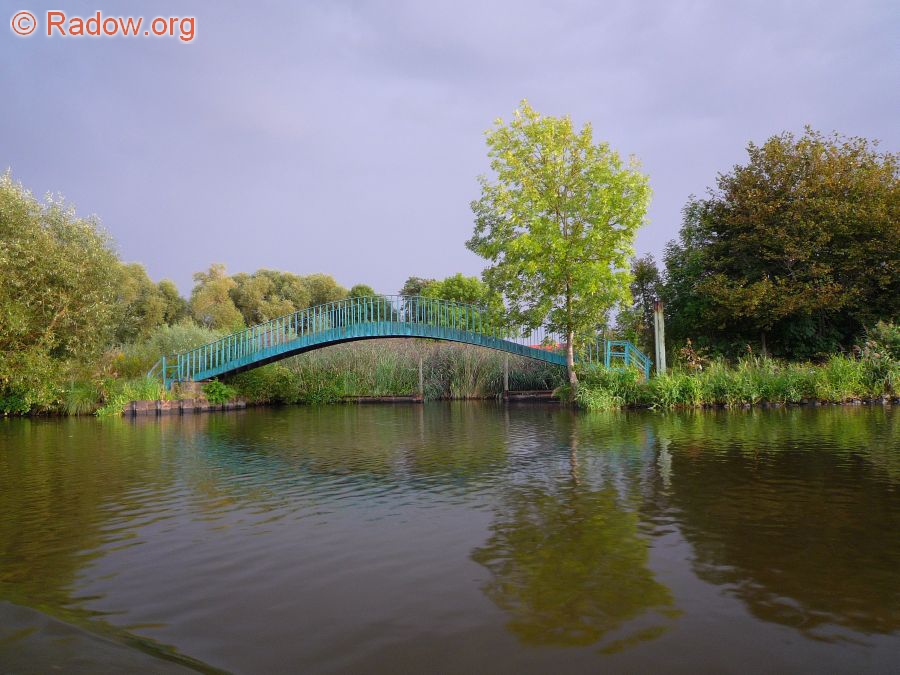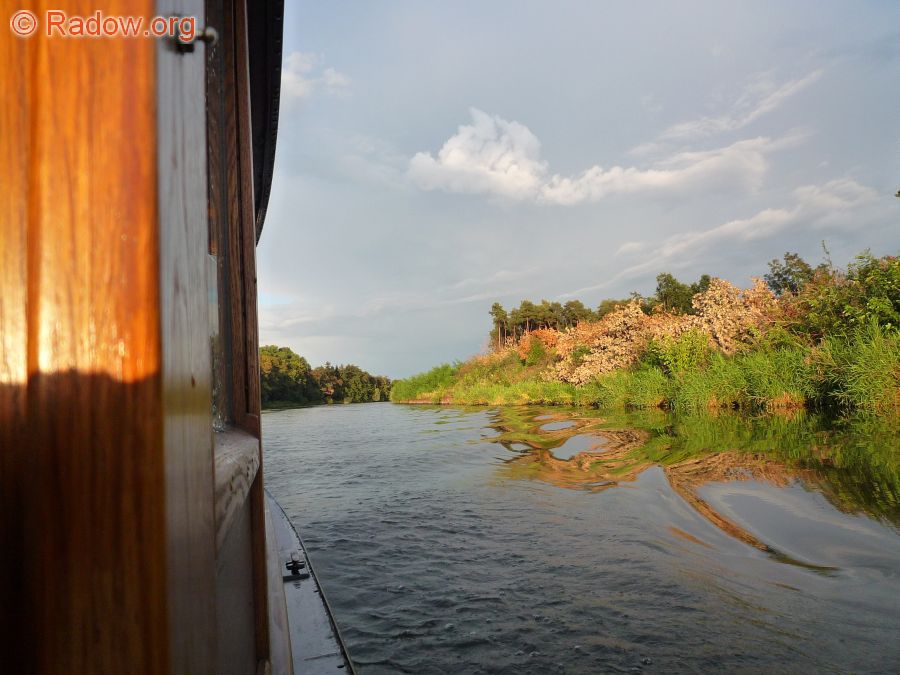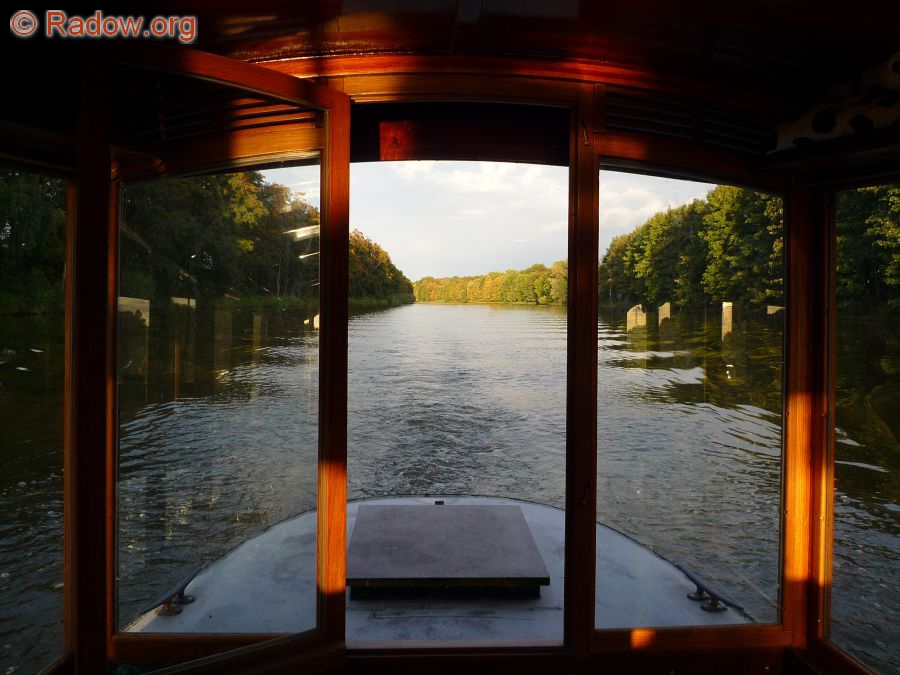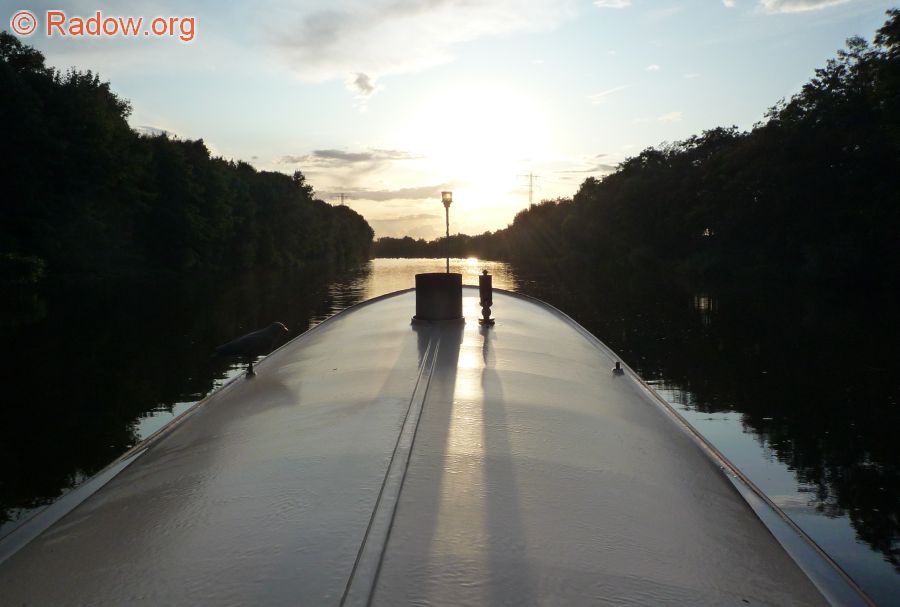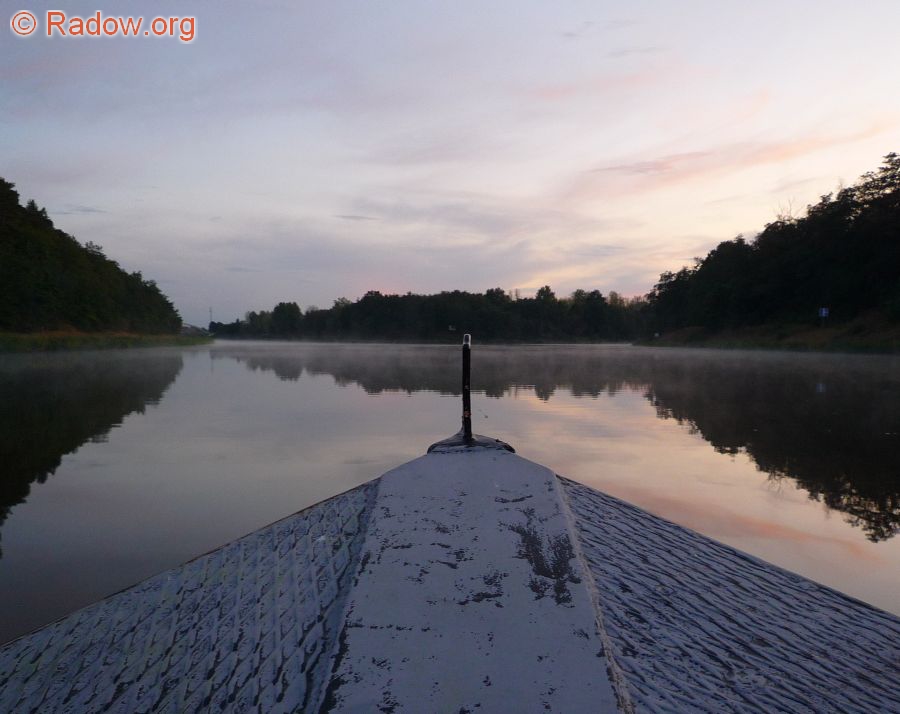Steamboat Transfer Berlin -> Hannover, 28/29.08.2009
1 steam boat, 3 men, 3 days, 300 km, 500 kg brown coal briquettes
For three years I operated my steamboat in Berlin from Leipzig. With my job move to Hanover, this long-distance relationship was now over. Since Emma is a watercraft, I wanted to transport her by water. From Berlin you can get to the center of Hanover via the Havel, the Havel-Elbe Canal and finally the Mittelland Canal. I "flew" the route several times using Google Earth. I also found a lot of useful information on the Internet, for example, lock times and mooring options. When I added up the river kilometers, I came up with just under 300 km. But since there was little time and Emma had never let me down over the last 2,000 km, I only planned for 4 days of travel from the start.
On Friday, August 28, 2009, we drove to Berlin at midday. Emma swam as well as ever, but unsuspectingly, in the southern port of Spandau. I fetched a trunk full of brown coal briquettes from the hardware store twice. The salesman was wondering what anyone could do with so much coal in such lovely weather - but when I tried to explain, he looked even more incredulous. Together with the supplies on board, we now had 500 kg of briquettes and a few scoops of strange coke from the last DDV steamboat meeting. To be on the safe side, 150 kg of coal were stored on H.-G.'s steamboat Max Eid in the port of Braunschweig. After stocking up on enough provisions at the nearest supermarket, we had a really good first evening on Emma. We didn't have far to go to bed. The stoker slept next to the boiler on the coal bunker and the helmsman preferred the canopy of the boathouse to a place next to me in the cabin because of the wonderfully warm night.
The next morning was a foretaste of the rally to Hanover. 06:15 light the fire and everyone gets ready at the wash basin. At 7:00 sharp, Michael (Emma's Berlin supervisor) brought fresh rolls on board. Unfortunately, his schedule with the Berlin fire service did not allow him to accompany Emma for at least a short distance - and so when we set off (07:35, km 0) you could almost see a tearful but also a happy eye, from which sparkled the motivation to move forward with his own boat project. Michael, I'm coming to the christening with Emma!
I knew the first stretch of the journey very well (see WSV-Map - you can find a Google map with the route taken at the end of this text). We went down the Havel and then into the Wannsee, past the venue of the last beautiful steam boat meeting in 2009. I know every bend here. Finally, a final whistle salute to the Schönherrsche Anhöhe (08:30, km 9 - the individual waypoints can be found below on the Google map if you click on the points) and then left past the Pfaueninsel towards Potsdam. The goal was a constant steam pressure of 5 bar and no luxurious swerves so as not to extend the journey unnecessarily: so always slightly on the inside behind the fairway buoy in the bend. This is generally possible with our small boats – but even lawyers use the word “generally” to allow exceptions – and that’s how I found the handbrake for the first time with Emma:
Although there was a yoghurt pot much further inland from us, Emma, with her 70 centimetres draft, ran gently and almost imperceptibly onto a sandbank (09:20, km 15.32). It's hard to know what to do when the engine is turning hard but you're getting slower and slower. A bearing with the grappling hook quickly gave us certainty and thanks to the reverse gear and the merciful ground, it was quickly done again. Actually, I had taken a shortcut like that before. 3 fully equipped adults, plenty of provisions and over half a ton of coal on board had probably pulled the usual hand's breadth of water out from under the keel. When I later uploaded the GPS recording to Google Earth, my "wake swirls" were exactly over a bright spot in the water... WSV-Map.
Passing north of Potsdam, we got a taste of the next few days on the Sacrow-Paretz Canal (09:40, km 18). With a dead straight canal running east-west, there is 80% headwind in the northern hemisphere - and it was blowing hard! We were happy about every bend that gave us a little wind protection behind the trees. Despite this, we were able to reach an average speed of 9 km/h on the 37 kilometers of canal to Brandenburg (13:47, km 55), including the oil break.
Small vehicles in Brandenburg are supposed to use the city lock. This makes it easy to drive through the city's backyards, past old warehouses and small businesses.
A small historic tugboat with a load of tipsy men was waiting in front of the lock. They had all developed a love for Emma, which was apparently fuelled by her female name and the alcoholic drinks. When we then entered the lock, it was clear to us that Emma would no longer fit into the lock with the tugboat and the two shiny holiday homes! - But then the male choir "Emma must come" also switched off the lock keeper's reason, who then asked us over the intercom to enter the lock immediately.
All common sense was of no use (the instructions of the lock staff must be followed!). The lock keeper grabbed Emma by the rope and pulled her with all his strength (and he had it) into the full lock chamber. 3 tons need time to accelerate (both positive and negative) and so Emma hurtled between the boats like a wedge in the boom. I have a 15 mm thick iron rubbing strip, which I will probably not live to see wear and tear. A few fenders did their job, here and there one was missing... Despite being wedged as far as possible, Emma was still 1.5 m out of the lock chamber - we were allowed to leave again...
After 40 minutes, the first lock of the day was completed - this too resulted in a nice zigzag in the GPS logbook. At around 2:30 p.m., we continued through beautiful Brandenburg and past the steamer Nordstern, which is moored here by the Hafel ships waiting for its steam-powered deployment.
After the human storms in the lock, the Breitling and Plauer lakes awaited us with a strong westerly wind. Of course, it had now started to rain. The exit from the Brandenburg city route is specially closed off with a 400-meter-long groyne to the west towards the Breitling lake to protect against waves. So we drove for a while in strong crosswinds, but in calm water. On the other side of the groyne we could admire the surfers who were speeding over the foam crests at what was, for us, breathtaking speeds. We had to go through that too! And as soon as we had left the protective groyne through the exit to the north, the dishes were already rumbling through the cupboard. We quickly closed the last tarpaulins and went through! WSV-Map
For about 2 km there was no other route than to drive across the waves and let them rock us through. In theory, you would also have had to constantly avoid the sailing boats whose skippers were happily riding out the wind sitting on the railing. But they showed sportsmanship and did not (always) insist on their right of way. In such situations, passengers think of wet cameras, owners of engine failure or salvage costs... But Emma finally made it, as she has for the last 100? years.
When we were finally able to head west against the wind before the Silo Canal flows into Lake Plauer (15:18, km 63), the shower stopped. With the waves from the front and a bit more light, everything looked much friendlier.
After crossing the Seegarten Bridge in Kirchmöser (15:50, 68 km) and reaching the Grosser Wendsee, we had mastered what was probably the most exciting part of our journey. Interactive map see WSV map
The Wusterwitz lock (16:11, km 71) lifts a vessel into the Plau Canal, which is 4.75 m higher. We waited for this service for around 60 minutes with the boiler at full pressure. "The Plau Canal is one of the oldest artificial waterways in the former Prussian state. It was built between 1743 and 1745 on the initiative of King Frederick II and connected the Havel (Plau Lake) near Plaue with the Elbe near Parey. Its economic importance lay mainly in the transport of salt from Schönebeck to Berlin and peat from the Fiener Bruch as fuel. The Parey, Kade and Plaue locks and eight wooden drawbridges were located along the Plau Canal". Source: wsv.de/wsa-brb/wasserstrassen/Elbe-Havel-Kanal
After an uneventful lock passage, we continued on the historic path towards Gentin at around 5:30 p.m., which we passed at an average speed of 8.5 km/h since the lock (6:52 p.m., km 86). When the wind had calmed down, we got a decent evening shower.
The shipping traffic had already stopped and so we decided to continue strolling through the rain-cleaned nature, in the wonderful evening atmosphere and with the wind having died down.
At 20:00 (km 97) we reached the junction of the Pareyer connecting canal as we sailed towards sunset with light fog over the water.
This would be the way to the Elbe towards Hamburg. For us, this first day ended in the familiar atmosphere of a small marina under the Parey mill (20:26). A short steam lecture for the boat neighbor, a good evening meal and a warm shower concluded the day.WSV map
In 13 hours we passed two locks - 2 ½ hours - and covered 99.17 km at an average speed of 9.4 km/h. We threw 301 briquettes into the boiler on this stretch! Including heating, we used 171 kg of not particularly flammable brown coal briquettes, i.e. 1.7 kg/km or 11.8 kg/h
Unfortunately, today in 2025, the interactive map of my GPS recording no longer works - I will try to repair it in the next few days.
